
Contents










People · Written by Park Jina Photographed by Studio Kenn
Master of Self-Emptying
and Self-Discipline
Living Legend of Modern Korean Art
Abstract painting pioneer Park Seo-Bo is referred to as a seminal figure in modern
Korean art who co-founded Dansaekhwa, a Korean movement of monochromatic paintings.
Being among the nation’s first generation of modern artists, having headed leading art associations in Korea and working as a professor at
Hongik University for around three decades, the native of Yeocheon-gun County, Gyeongsangbuk-do Province, now 88 years old,
lives and works at his new home, studio and gallery, the Park Seo-Bo Art Base, in Seoul’s Yeonhee-dong neighborhood.

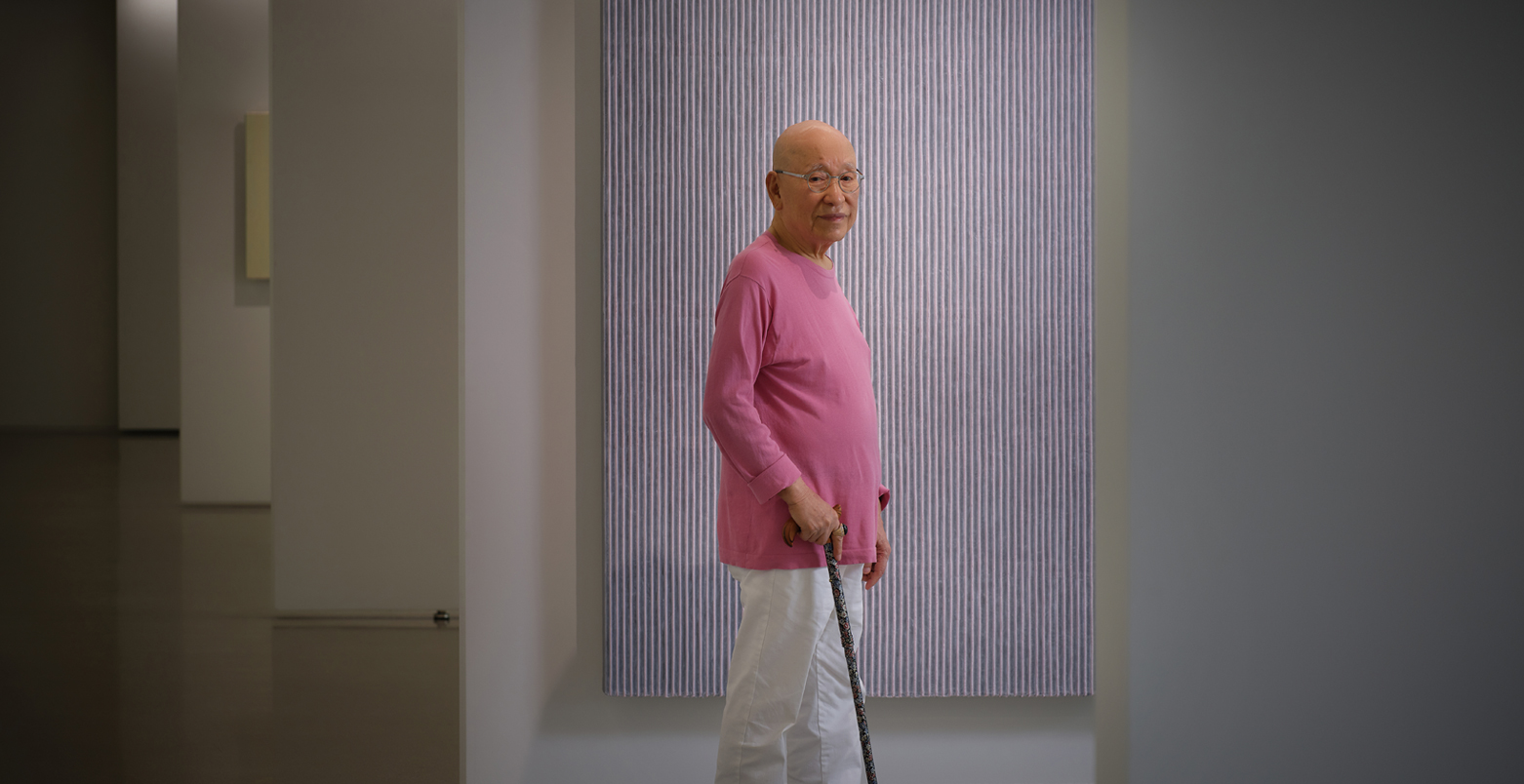
Upon entering the Park Seo-Bo Art Base, the new studio, gallery and home of Park Seo-Bo, one cannot help but admire the structure. The landscape created by a mixture of the garden seen over a window, autumn rain falling on time and the exhibited artworks are masterpieces in and of themselves. Korea’s color fills the garden that embraces oriental elegance, and the color Park is trying to embody through his Dansaekhwa (monochrome painting) piece “Myobeop” is also this very Korean color.
“The basic principle of Dansaekhwa is to encourage the use of colors that resonate with nature. This is a concept different from monochrome opposite to polychrome popular in the West,” he said. “Expressing Korean color is easier said than done. The color isn’t simply defined as black or white but one looking whitish like that used in pottery. In the past, our mothers used to cook rice by stoking up a fire. The space where they cooked rice all their lives has turned blackened from smoke billowing from cooking rice that permeated the ceiling and walls. That’s the true color of nature. If you put your finger to that using your imagination with your eyes closed, you feel the depth of your spirit being drawn into infinity.”
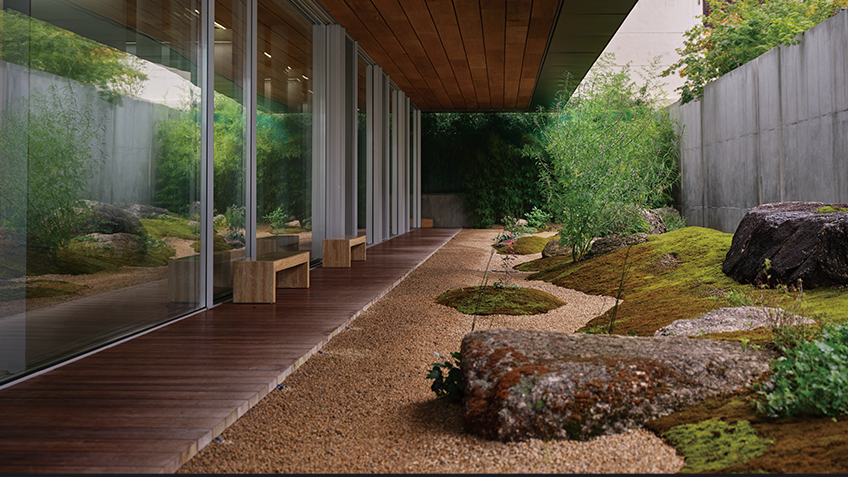
In a garden filled with oriental sentiment, even a stone or leaf of grass is not placed without having a purpose.
Korean color is said to originate from the Korean spirit, and what Park seeks to embody through Dansaekhwa is the world of the spirit that has empowered Koreans for 5,000 years. This is why his works are beloved in both the East and the West.
“The West looks at nature and separates it from mankind. In other words, nature is an object to be conquered and remodeled by men. In Korea, however, nature is a being that becomes one with us. Koreans hope to live in nature and think of themselves as part of nature itself. This has served as great inspiration for 5,000 years,” he said.
“What is changing is interpretation but its essence doesn’t change. Unfortunately, however, these were destroyed, being branded as byproducts of the premodern era with the launch of modernization. This is like destroying shrines under the spell of a superstition. As the pivot that bolstered me shook, the time devoid of the pivot has come after all and confusion has become inevitable.”
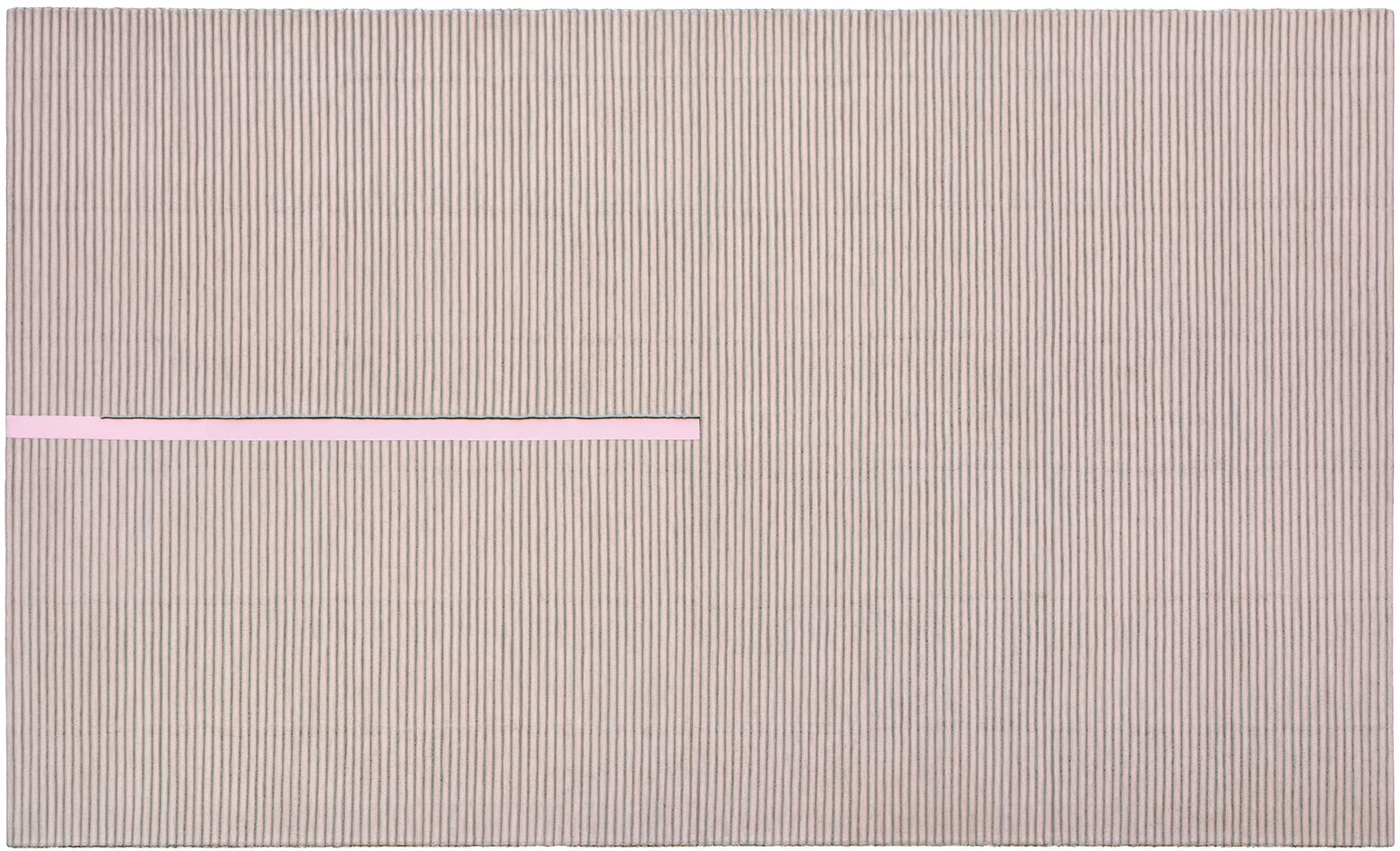
Ecriture No.070628, Mixed Media with Korean hanji paper on canvas, 180x300cm, 2007 © Park Seo-Bo
Park said he tried to restore the lost perception of nature and spirit through his effort to reflect the color of nature. Eyes gazing at a canvas that contains artworks are also different from existing points of view. Unlike other painters who regard the canvas as the means for expressing their ideas and a prop for bolstering images, he uses the canvas as the conduit for self-emptying by “tearing himself to pieces” rather than expressing himself.
“To me, paintings are a tool of self-discipline. Namely, they are intended for elf-cultivation. Since the 70s and 80s I have voiced that I’d like to live as a classical scholar. This is the state of inactive nature. ‘Myobeop’ is eventually headed toward a state of abandonment and nothingness by drawing lines downward repeatedly,” he said.
A state without indecent desire and greed and that of purity extending to nature -- Park’s works describe a world of healing that is to be completed by emptying oneself. The colors for smoke, air, azalea and autumn foliage -- these colors embodied in his works are not from a world of artificiality but one of nature. Between the lines made through repeated scratches reveal the painter’s stubborn patience and high-density consolation.
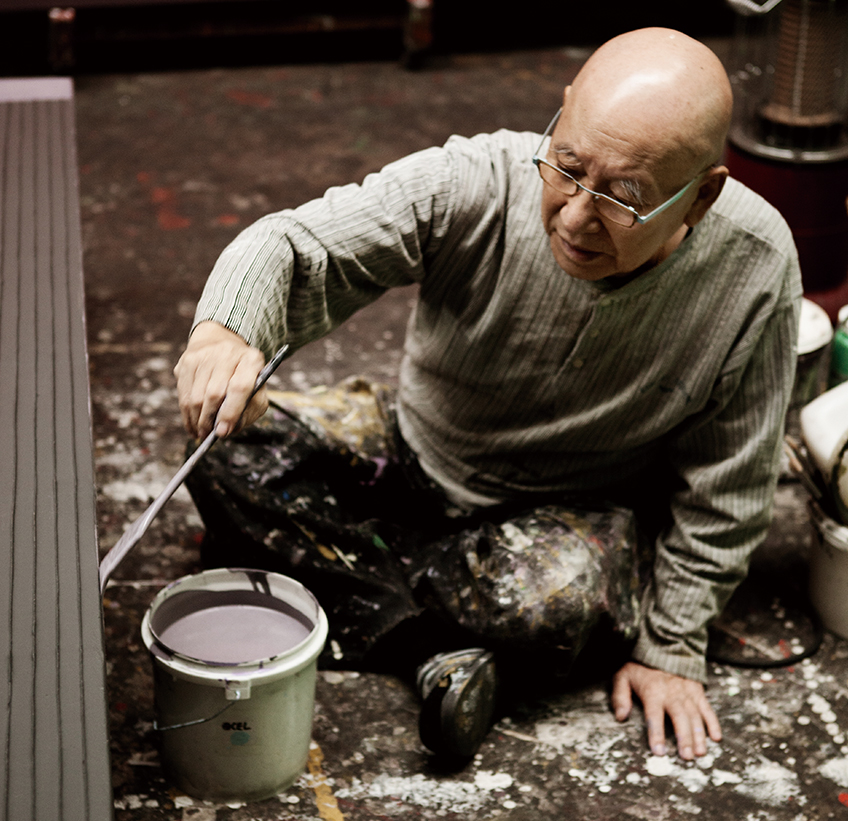
Park Seo-Bo, an artist who has dedicated his whole life to follow a path that no one has walked before. He called himself the happiest man alive. © An Ji Sup
‘World’s Happiest Endeavourer’
“What’s important to artists is having penetrating insight of an era. They need insight into a period, and passion and knowledge are not important,” he said. “What I always tell young people is to read books often but then forget everything after reading. Just drink tonics made with ginseng and antlers and throw the rest away. The same goes for books. The moment I read a book, I might as well forget it because its core elements are already in me. The more knowledge from books you remember, the more you are locked in it. Your creativity inevitably disappears.”
His motto to his students has always been “Those who don’t change will perish, but so will those who do.” Park has strived to have variety in his works throughout his career and prevented himself from changing.
The artist said he has spent his life doing what others do not: smile. He calls himself the happiest person, saying there were times when he painted despite sleeping only three hours a day and endured poverty thanks to the help of others, but that he received favorable evaluations despite doing what he wanted to do.
“I’ve been doing whatever I can to empty myself completely during my lifetime. May I call this a belief that has propped me while painting pictures until now? I have no other desire. What I’ve repeated so far is pushing me. I can feel tired and weary physically but mentally I’m happy. I’ve done what I wanted to do, attained global recognition and painted numerous works. I’m the happiest endeavourer in the world now,” he said.
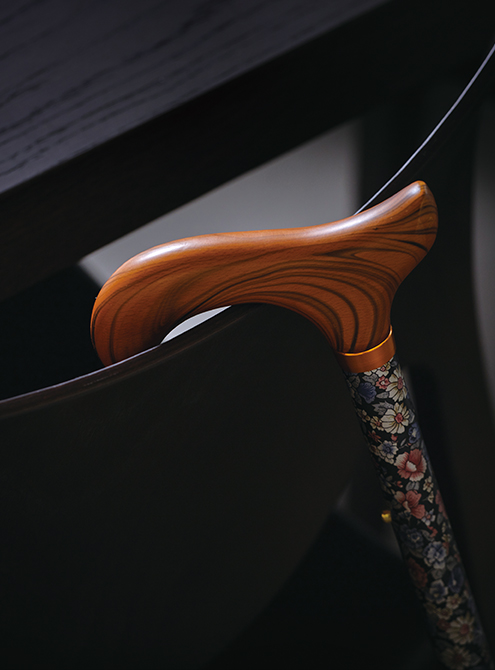 Fashionable Park likes pretty accessories. You can get a sense of his taste upon looking at his unique-patterned cane.
Fashionable Park likes pretty accessories. You can get a sense of his taste upon looking at his unique-patterned cane.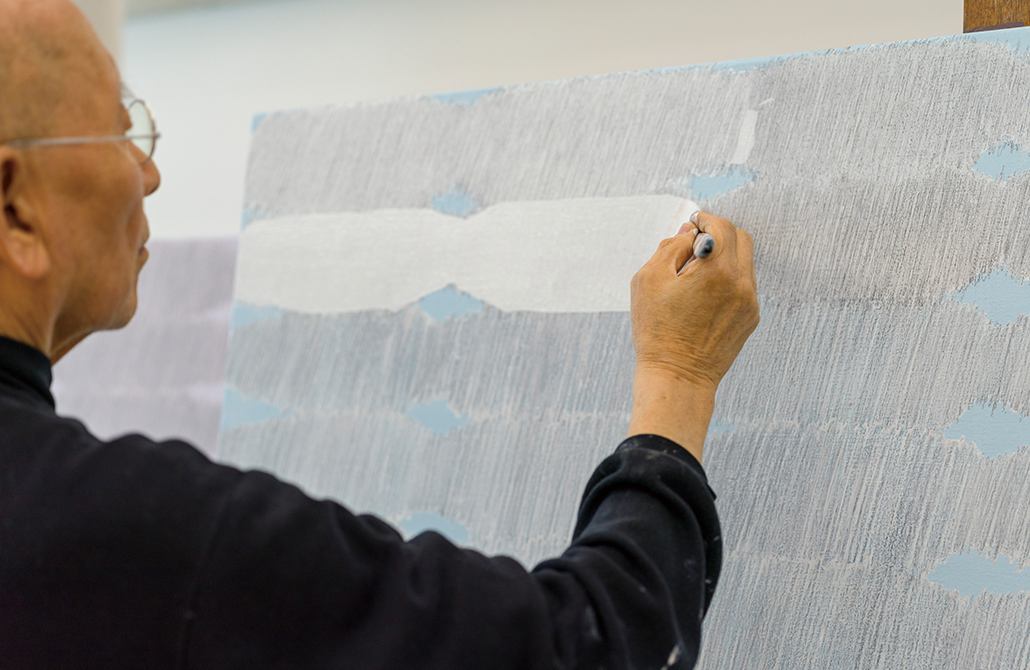 Drawing lines repeatedly is a process of practicing one’s body to achieve emptiness. © Song Hyun Ju
Drawing lines repeatedly is a process of practicing one’s body to achieve emptiness. © Song Hyun JuOther Articles















